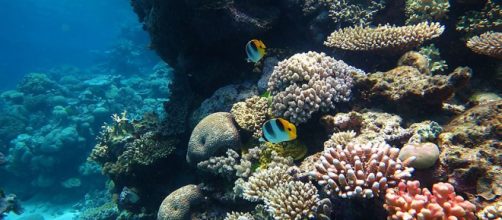Climate change is playing havoc with the Great Barrier Reef which is home to the world's largest collection of Coral reefs, apart from thousands of species of fish. It is also the habitat of some varieties of endangered species like the green turtle and the dugong. Global warming has affected the coral over a vast stretch of nearly 500 miles in the northern region, and they need protection.
CNN reports that Australia has taken up the challenge and will invest $379 million to help protect the world heritage site from the effects of climate change.
The ambitious conservation plan will have the Australian government working in partnership with the Great Barrier Reef Foundation to take care of the health of this natural wonder.
Bleaching of coral
Global warming is a major threat to the coral because the rise in sea temperatures expels the algae that grow inside them. This destroys the main source of energy and leads to discoloration of the reef. An aerial survey has revealed that large portions of the Great Barrier Reef have suffered from bleaching. These have been recorded in 2016, and 2017 and nearly 900 miles of the UNESCO World Heritage site has been affected. This is a matter of concern because such bleaching was noticed in 1998 and 2002 but, appears to have become more frequent now probably due to climate change.
It is possible to check the effects of bleaching in case the surrounding temperature reduces because it will provide the algae a chance to recolonize. Otherwise, the coral will die which will spell doom for different species of marine life that use it as their natural habitat.
Reversal of the trend
The Great Barrier Reef falls into the category of one of the seven natural wonders of the world. It is the largest living structure on Earth that is visible from space. It contributes billions of dollars annually to the Australian economy through fishing and tourism. Moreover, millions of people across the world depend on the reef for survival. Hence, it would be a crime to turn a blind eye to the fate of the coral.
It all boils down to controlling global warming, and the Australian government has taken it up as a challenge. The funds will be used to conserve the reef and improve the quality of water to ensure the creation of an environment that will protect the coral. Obviously, the focus will be to control the emission of greenhouse gases that are responsible for the rise in sea temperatures.
BBC adds that the reef has lost much of its coral due to bleaching due to rise in sea temperatures plus damages from crown-of-thorns starfish. The funds will go towards reducing the runoff of agricultural pesticides. A portion of the funds will also be earmarked for farmers in the vicinity of the reefs to encourage them to modify their practices.


